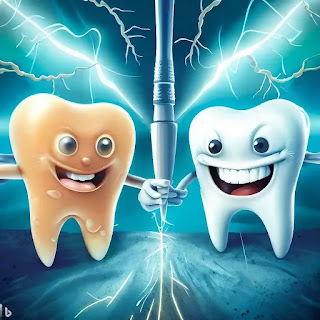Periodontics vs Endodontics.
Differences between Periodontics and Endodontics.
The difference between periodontics and endodontics lies in the areas they address and treat in dentistry.
Periodontics focuses on the areas around the tooth, including the gums and surrounding tissues. Its goal is to prevent and treat diseases that affect these structures, avoiding the loss of bone that supports the tooth, dental implant, or fixed prosthesis.
On the other hand, endodontics deals with diseases that affect the inside of the tooth. This includes the dental pulp, the tooth's nerve, root, and dentin. The endodontic procedure, commonly called "root canal treatment," involves removing the damaged pulp and sealing the resulting space to prevent future infection.
In short, while periodontics focuses on the tissues around the tooth, endodontics deals with conditions inside the tooth.
What should you know about endodontics?
Endodontics, also known as root canal treatment, is a branch of dentistry dedicated to the study and treatment of the morphology, physiology, and pathology of the dental pulp and the tissues surrounding the root of the teeth.
Its purpose is to maintain the health and functionality of teeth by treating the inside of the teeth, significantly when the dental pulp (nerve) is damaged or infected. The main objective of endodontics is to disinfect and seal the internal cavity of the tooth, eliminating the bacteria present and preventing the penetration of new infections. Contrary to popular belief, endodontics does not involve the removal of the dental nerve but disinfection and sealing to prevent future infections.
In short, endodontics is essential to preserve teeth affected by internal infections, allowing them to remain in the mouth without the risk of extraction and maintaining their functionality.
When is endodontics necessary?
It is true that initially, the idea of undergoing a root canal may generate some apprehension. Still, it is the best option when an infection has affected the dental nerve and cannot be solved simply with a filling or external sealing.
Endodontics becomes ideal when the dental pulp inside our teeth becomes inflamed or infected due to deep cavities, trauma, or fractures. In many cases, when this point is reached, it is possible to experience difficulty eating or sensitivity when consuming hot or cold foods or liquids. Treating this condition in time is essential to avoid the deterioration of dental health and the possible risk of losing the tooth. Endodontics can disinfect and seal the inside of the tooth, relieving pain and restoring function and comfort in chewing and speaking.
What is Periodontics?
Periodontics is concerned with preventing and treating periodontal diseases, including conditions such as gingivitis and periodontitis.
Both gingivitis and periodontitis are characterized by gum inflammation and bleeding. Given these symptoms, seeing a dentist as soon as possible is crucial to obtain an accurate diagnosis and appropriate treatment. Gingivitis is an early stage of periodontal disease and, if left untreated, can progress to periodontitis, which involves more severe damage to the tissues that support the teeth.
Periodontal treatment can vary depending on the severity of the condition. It may include procedures such as deep gum cleaning (scaling and root planing) to remove accumulated plaque and tartar and more advanced interventions in cases of advanced periodontitis. The primary goal of periodontics is to maintain the gums' health and support tooth tissue, which is essential for long-term oral health and the prevention of tooth loss.

